Are electric cars good in winter? It’s a common question for those who own or are thinking about purchasing an EV. If you’ve ever left a charged cellphone in a cold car overnight and been greeted the next morning with a dead phone, you’ll understand the curiosity.
Yes, just like your phone, cold temperatures can affect the lithium-ion batteries in EVs. However, this doesn’t mean your vehicle won’t survive the winter. Depending on your driving habits, you may not even notice a drop in performance. You can also work around any lost output by simply planning ahead.
How Winter Weather Affects Electric Cars
Before we delve into the why, let’s first investigate how electric cars are impacted by winter weather. Though there may be some concerns over how these cars perform on wintry roads (we’ll get to that in a bit), the main issue is that cold temperatures may reduce the distance an EV can travel on a full charge, or it’s driving range.
Although some of the latest EVs boast driving ranges over 500 miles and charging infrastructure is developing throughout the country, range anxiety remains a primary concern for many consumers, so a reduction in driving range is no small issue.
How much of a performance drop does cold weather have on electric car batteries? Research by AAA found the average electric vehicle’s driving range decreases by 41% when the outside temperature dips to 20 degrees and the car’s heating system is on.
Why Winter Affects Electric Cars
Electric car batteries are hampered by winter weather in two ways. First off, cold temperatures create resistance against the battery’s chemical reactions, slowing down the energy-producing process.
It’s the increased demand of operating in cold temperatures that takes the greatest toll. Driving a vehicle in frigid weather requires more power, particularly when it comes to keeping the car warm. In a gas-powered car, the engine creates heat, which can be redirected into the cabin when it’s cold outside. Without an engine, most electric cars depend on their batteries to power energy-intensive resistance heaters.
The winter season brings plenty of other, not-so-obvious power demands. Less daylight requires headlights to run longer, for example, and lower temperatures can lead to more condensation on a car’s glass that will call for defogging. More power going to other parts of the car means less power going to the motor.
Are Electric Cars Good in the Snow?
Acclimating to frigid temperatures is just one aspect of winter-weather driving. The other is navigating snow- and ice-covered roads.
Once upon a time, electric vehicles had reputations as less-powerful cars that you didn’t want to take out on anything but a pristine strip of pavement. Those days are long gone. After all, there are now fully electric pickup trucks on the market. In fact, because their batteries are usually located under the floor, electric cars generally have a lower center of gravity than gas-powered vehicles, which can result in better handling.
“Electric vehicle owners I have talked with have told me that their electrics handle winter easily,” said John Paul, AAA’s Car Doctor. “This is the same experience I’ve had during my car evaluations.” For example, Paul evaluated the Ford Mustang Mach-E in winter weather conditions and found the optional all-wheel-drive system performed extremely well.
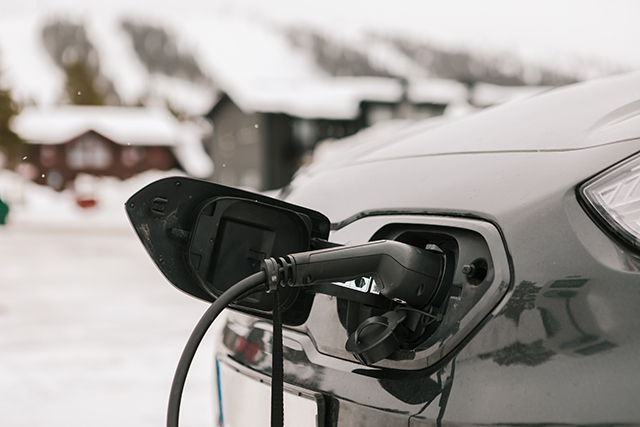
Winter Weather Workarounds
There are several easy steps to take to improve your electric car driving experience in the winter.
Don’t Let the Battery Charge Drop Too Low
An electric car reserves about 15-20% of its charge capacity to heat the battery itself. Make sure you’re well above that level before heading out.
Be Smart With the Heat
Warming an electric car is a significant drain on its battery, so use the heat efficiently. It may seem logical to heat the entire cabin, but that could waste energy, especially if you’re driving alone. If the vehicle has heated seats and steering wheels, stick to those to use less electricity. “Some electric vehicle owners tell me they use only minimal heat and have better luck extending the vehicle range using the seat heater and dressing a bit warmer,” Paul said. Preconditioning the cabin when the car is plugged in and charging is another way to get into a warm car while maximizing battery range.
Park in a Garage
Batteries perform best in moderate temperatures. Keeping your vehicle out of the cold will allow the battery to charge faster and hold the charge for longer. Also, it takes less energy to keep a car warm than to get it warm, meaning the battery won’t be taxed raising the cabin’s temperature.
Inflate Your Tires
This should be done by all motorists throughout the year, but it’s particularly important in the winter. The air in your tires contracts in colder temperatures, causing air pressure to fall. Only with fully inflated tires will you get the most efficient drive.
Utilize Eco-Mode
Many of today’s electric cars come equipped with an eco-mode, which extends driving range by limiting the car’s energy consumption.
Switch to Winter Tires
If you’re still concerned about driving through snow and ice, Paul suggests focusing less on your car’s source of power and more on the part of your vehicle that touches the ground. “Just like with any vehicle, your winter weather driving experience can be improved immensely with the addition of four winter tires,” he said.
So, Are Electric Cars Good in Winter?
What we need and want from our car varies from person to person. That said, AAA advises drivers not to give electric cars the cold shoulder solely because of any winter struggles – driving them this time of year simply requires a touch more preparation.
It’s also easy to forget the lead batteries found in gas-powered vehicles are impacted by cold weather, as well. Yet you wouldn’t avoid your car in the winter out of fear the battery won’t start. (Nor should you – without driving regularly, your car battery won’t maintain a full charge.)
Furthermore, technology is continually improving, making battery capacity and driving range less of a concern. Some electric car companies, for example, are now using heat pump systems that require less energy than resistant heaters.
And finally, Paul reminds us that the drop in driving range doesn’t occur with the flip of a switch. “Yes, range changes in the winter, but just like the temperature, it changes gradually. As the outside temperature drops from summer temps in the 80s to fall temperatures in 50s and winter temps in the 20s, you get acclimated to the change in range.”
Visit AAA’s Electric Vehicle platform for more information on these cars of the future.
Have more car care questions? Leave them in the comments below!
43 Thoughts on “Are Electric Cars Good in Winter?”
Leave A Comment
Comments are subject to moderation and may or may not be published at the editor’s discretion. Only comments that are relevant to the article and add value to the Your AAA community will be considered. Comments may be edited for clarity and length.



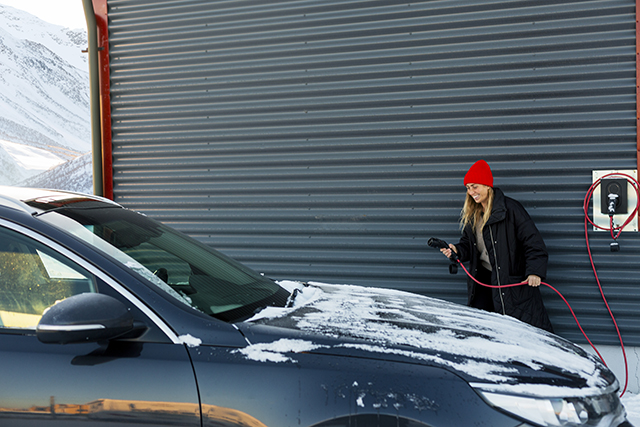


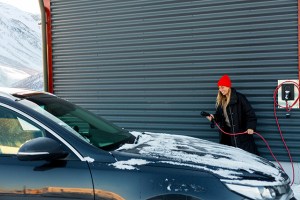
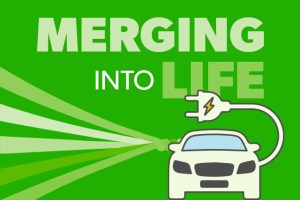







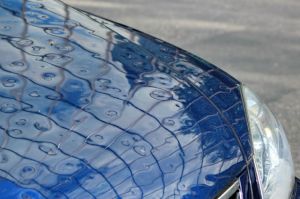
Just now seeing this article…Doesn’t power generated by fusion energy (where, in theory, there is much greater efficiency and much less waste) hold promise? Surely that’s where research dollars should be going…
They are far they’re far from eco friendly. The electricity is generated by mostly fossil fuels.All the plastics in the vehicles made from oil. The lithium mining is ridiculously bad for the environment. End, the batteries are absolute, one hundred percent toxic to the environment.
1) You can get your charge from clean energy, so that’s up to you, not a given. 2) Plastics are needed everywhere, so that point is moot. 3) True on lithium mining … in the past. But better now and getting better still. AND 4) What is your alternative? Fossil fuels? Terrible emissions. Bicycle – okay if that’s what you’re willing to do. For those of us driving, EVs are better than fossil fuel cars. Not perfect, just better
“The Ford Mustang Mach-E in winter weather conditions and found the optional all-wheel-drive system performed extremely well.”
It should. What about 2WD?
AAA and Andrew Sheldon continue to minimize the very serious impacts of cold weather on EV’s and of EV’s in general. Cold DOES effect batteries in significant ways. In minimizing that, you do a huge disservice to your readers. Heating the whole vehicle cabin has many benefits in keeping windows defrosted and free of of ice buildup, unlike ‘heating just the seat’. Winter tires, which experience heavy wear on bare pavement, are a nice addition if you can afford them and the costs of extra wheels which greatly ease the annual transition. Those costs are rarely mentioned. Winter EV driving is easier for those that are fortunate enough to live near available chargers or have their own added cost charging system. Those home based charging systems can add massive drain and impacts to the local electric grid which was never designed nor built to handle major systems such as the EV chargers, heat pumps etc. Never mentioned are the huge amounts of microplastics added to the roads and washed into local water systems and ultimately the oceans by rapidly wearing EV tires designed to carry the heavy batteries at highway speeds. Today’s tires are largely made of ablative plastic derivatives, not rubber as in the past, and account for one of the largest potions of the microplastic pollution in our Oceans, estimated to be the number two cause after fabric filaments! … well behind straws, balloons, plastic bags and such! Worse still, and ignored by most writers, are the very major impacts of mining for battery minerals and the planned destruction of thousands of square miles of the poorly studied and poorly protected deep sea ocean floor habitats with the equivalent of strip mining the benthos in an ‘out of sight, out of mind’ quest for these minerals. More reason NOT to drive a vehicle but to take public transit!
Teri: LOL… they aren’t practical for most people. ICE or hybrid is the way to go.
All of you ev owners and potential ev owners are drinking the “kool-aid”. The mere fact that the federals government is mandating this should be enough not to buy ev. Wearing heavier clothing while driving in colder climates.. Comon man….
We need less government and more capitalists to drive climate change issues.
I have owned 3 Toyota hydrids averaging over 40mpgs. If the government was smart(god forbid) a transition from ice to hybrids first and then to evs. Do not hold yr breath, The toyota hybrid system is a proven drive train and could reduce our oil consumption in addition lower emissions.
Who really believes that those earning below $75k can afford evs and where will the charge them? Power grid demand another major issue.
I will not own an ev in my lifetime…..Sorry….
As long as you ignore the switch from electric resistance heating to using much more efficient heat pumps and continual progress made by Tesla and other EV makers I guess you have a point.
The Norwegian study is more up to date but still misses that as batteries warm up the actual range available increases.
You must also ignore that most EV owners charge at home in garages and spend less time “fueling” than you do in your ICE car. Add in the loss of range all ICE vehicles experience and the occasional death caused by keeping warm inside an ICE vehicle from its own emissions of pollutants.
One day you may stop sticking your head in the sand and join in owning superior EVs.
LMAO….ok, you keep playing with your toys and restricting yourself; most normal people will stick to ICE vehicles. There is no way I or most people will drive with no or little heat and wear heavier clothes; you have to be nuts. Let me know when you are stuck in traffic in a snow storm and the battery is running down so you have to shut off the heater and defroster. You’re foolish. Plus, I can fill up my gas tank much faster than you can recharge your toy. Americans will not put up with this nonsense.
Don’t be silly calling EV’s “toys”. Yes you can stand freezing at a stinky gas station as you watch the cost go up on your weekly fill. We EV owners plug our cars in at night and wake up to a full tank. As for getting stuck in a traffic jam you should understand that EV’s use less power at low speeds and your gas will run out long before an EV’s battery will be depleted.
Went on a roadtrip out West in an EV last summer. Most stressful time ever. Few/broken charging stations. Range way less than stated by manufacturer. I’ll stick with ICE thank you.
I totally agree with you. EVs are a joke, hybrids and ICE are the logical choices.
I’ve read many articles about EVs, but no where has it told me what it costs to charge these vehicles, nor how much it costs per mile for EV vs internal combustion engine.?????
My son & wife have two EVs in Vermont. The cost to charge at home has been much lower than gasoline. Maybe 25%, or less, than gas.
On Cape Cod unless gas exceeds $4, gas is cheaper than electtric.
I have a concern as to how long the battery life is. And how many charges can it take before a noticeable drop off in capacity as a computer battery does
Electric vehicles are not good in the winter. Try driving one 20 below zero like it can be in central New York. Good luck!
I respectfully disagree. My son has the Ford Lightnin’ pickup, his wife the VW ID… Both are fine in northern VT. You need to use your noggin.
Great article, but you will never get me to purchase an electric car. Just look what happened a couple of weeks ago with I95 being shut down due to all the snow cold weather, and accidents. The battery charge in these electric cars would have drained and most likely the driver would have died due to hypothermia. I prefer gas!
You’re correct. I wonder how many cars with gas, or those who ran out, were stranded and hopefully all were rescued. All travellers during winter should have a Winter Emergency Kit with them. AAA has a great list of items on their website.
Joseph: I seriously doubt there were very many ICE cars that ran out of gas vs EV toys whose charge ran down. With ICE, you can take your fuel supply with you in inclement weather; not possible with the toys.
Interesting that you choose to display your ignorance on a public website. Your various messages clearly demonstrate that you know absolutely nothing about EVs. Talking to more than a few EV owners might get you educated, though your posts suggest a mind that slammed shut a long time ago.
My wife and I, for example, have owned a BMW i3 for 10 years. We live in New England, where it can get pretty cold. This car has never failed us, in winter or otherwise. It’s a pleasure to drive, a much simpler machine than an ICE vehicle, therefore much less to go wrong, and costs far less per-mile. No gas station stops, no anti-freeze, no spark plugs, no timing belts, no oil changes, etc.
I’m curious about how electric vehicles fared during the big traffic jam earlier this month south of Washington D.C. I read lots of horror stories from people who were stuck for upwards of 10 hours. Would an EV driver have been able to keep their vehicle warm under those types of conditions for that length of time? Obviously you would prefer to start with a full charge, but on average, how long could you sit in traffic and run the heater and still have enough charge to get off the highway to a recharging station?
Mark: I totally agree with you.
ARE ELECTRIC CARS ECO-FRIENDLY? 80% OF ALL ELECTRICITY IS GENERATED BY USING FOSSIL FUELS IN THE USA. That fossil fuel has a carbon footprint that is unavoidable. Whether it comes from coal, kerosene or natural gas that carbon ends up above our atmosphere, contributing to climate change, etc.
(52%of the non-fossil fuel generated electricity is nuclear generated – that ‘s on average 10.4% of the total US electricity going into your electric car is generated by atomic fission.)
The best generators are 42% efficient at converting fossil fuel into electricity. By the time it gets thru the grid and into a car that 42% has dropped to 36%. The motor in the electric vehicle is lucky to average 70% efficiency, reducing that 36% to 25%!
Electric cars are 25% heavier than fossil fueled equivalents, reducing their comparative efficiency to less than 19%. Today’s gas and diesel powered vehicles use fuel at efficiencies exceeding 35%. Even factoring in the 20% non-fossil fueled generating plants ELECTRIC vehicles only make 19/.80 = 24% efficient use of the fossil fuels they rely upon. That’s 24% ELECTRIC efficiency vs. 35% Fossil fuel internal combustion efficiency!!! Why would anyone tout electric cars?
Worse yet, the electrics concentrate their ‘pollution’ in the immediate areas around the electric generating powerplants. So large population centers become the victims of the pollution created by electric generating stations before the carbon even migrates up into the ionosphere.
If one takes into account the energy consumed and pollution created by manufacturing those soon to be deadly toxic lithium batteries one would realize that electric vehicles should be banned. Those batteries will become more of a problem than nuclear waste. Every one of them will become hazardous waste as soon as the new ‘dense technology’ batteries evolve. Until most electricity can be generated with clean systems electric vehicles should not be considered the solution to our environmental problems. If you really want to reduce carbon emissions cut down the frequency of your traveling by anything that requires external power. Or come up with a PRACTICAL alternative to fossil fueled generating systems. Solar and Wind’s inefficient use of our resources will not get the job done. It would require 12 times the investment in resources to generate our power with them – something better is required. Oh, 12 times our resources would translate into 4.8 times as much energy as we have total in the US. In other words, no matter how noble you try it can’t be done.
Nuclear, water power and gravity remain relatively untapped and offer the requisite power generating magnitudes.
Yes, when will people wake up and learn to think on there own, not just what the media and government tells them?
Probably never.
Gas/diesel powered autos with careful maintainable can last for decades. Do we have enough evidence on expected longevity of electrics ?
Do we have evidence on longevity and costs of EV battery replacements ?
I’ve thought of the issue with the life of the batteries as well. They are very expensive to replace. And what about the used EV market down the road. Do you want a used EV with an expensive battery to possibly need replacing? What will happen to those EV’s if the demand is weak?
The charging issue has its own problems. If you live in a city with street parking, apartment complex, condo, where do you overnite charge? If you live in a home in the suburbs with out a garage, charging can be more difficult. If you’re elderly do you want to pay the upfront cost to have a home charging port?
None of these issue exist with an ICE vehicle. ICE or hybrids are the way to go for the foreseeable future IMO.
A while back just as the north part of 287 opened I left work from the NY border and was entrapped on 287 in an ice and snow storm for 12 hours before a single lane was opened up. I had a near full tank and managed to prevent freezing me and the car. However almost half of the cars bumper to number on all lanes had run out and the one small plots had to weave around them. For them gas was available the next day. Now imagine if these were electric on the same road or any highway, who will bring them electricity to unblock the road and get home? Then look at the emergency evacuations we had for hurricanes when roads were blocked go tens of miles and think about what disaster would occur when they could not get out. I can get a can of gas but I can not get a can of electricity from charging stations. Tell me that cars stopping at gas stations where filling is quick but still creates long lines in emergencies is not better than charging stations you must get to and takes hours to recharge.
That is a valid concern and why we need to expand renewable energy infrastructure everywhere, including installing vehicle charging stations on more stretches of highways and roads. If we put our energy and innovative technologies available to us to work we can be world leaders for sustainable energy and technologies, saving us millions of dollars and reducing pollution and the destruction of our natural resources. Im waiting for electric vehicles to become more affordable hopefully if we make more of them then more charging stations will be built as well.
Maria: Please come into the real world. EVs will never be the primary source of transportation. Charging stations need fossil fuels to produce electricity and you can never install enough charging stations to accommodate all vehicles, especially in winter and on the interstates. People will not put up with standing in line then waiting 30 or 60 minutes to charge the batteries. You talk about pollution!! What are you going to do with the lithium batteries when they are no longer usable?? You need to pay attention to real facts vs your pie-in-the- sky, feel-good ideas.
John: I totally agree with you. EVs are not practical except for brief running around town, maybe.
Hybrids make much more sense that EV’S because of the nature of batteries and the fact that slightly less that 75% of electricity is created by fossil fuels and wind turbines are very expensive to build and maintain. Many politicians are pushing things at us for the wrong reasons. Hydrogen power could be better but it has expensive issues but we should be expanding the good varieties of Nuclear.
I agree that hybrids make more sense. I leased a Nissan Leaf for two years in order to see if it would be good for a New England driver. I found that it was excellent in three seasons. I charged this car with my own solar panels, so I didn’t have the problem of worrying about building turbines. What I did find that made me opt for a plug-in hybrid was the ice that would build up under the wheels. Sometimes I found it hard to steer because there is no combustion engine to melt that ice that splashes up into the wheels during very cold spells.
The ice issue you mentioned is interesting. Have you written to the manufacturer or NHTSB about it?
Good article. I love my Bolt – third one I’ve leased. It handles well, is practically maintenance-free because the mechanism is so simple, and the range drop does not affect my daily routine because I rarely drive far in any given day. Even when I do go for long distances, the PlugShare app gives me good info on charging stations, even in places like Vermont and New Hampshire. I recommend electric cars to everyone!
I want to buy an gasoline + electric car. Is that called a hybrid or something else. And what are the best of these type of card to by. I want an suv not a sedan. Thanks
PS to my earlier post. I put snow tires on the FRONT of the car and never had ANY ISSUES with these Connecticut hills.. It’s the perfect car for me. – my prior cars were a Porsche and Mercedes. I traded in the Mercedes to buy the Leaf and NOT sorry one minute. Only need to check tires and brakes every 5000 miles.. I LOVE this car. (I’m an OLD SCCA/IMSA member and love cars. The LEAF handles well, has pretty good pick up, and I plan my trips duet being all electric, but it’s fine for me., NO TUNE UPS, NO OIL CHANGES the least expensive car I’ve ever owned and it costs me $12-$1500 a MONTH on my electric bill, BETTER than $50-70 a week in the gas tank..
Thanks for informative report on your Leaf Ms Kavanaugh. Could you clarify expense advantage as annual figures? While “$50-70 a week in the gas tank” would be $2600-3650, I am not clear what you meant by “$12-$1500 a MONTH on my electric bill”. ??
In June 2017 I purchased a 2017 Nissan Leaf. (ALL Electric) I lived in SC at the time… In 2019 I had to return o my home state of CT. My Nissan Leaf S handles just fine and CT is “hilly” and winters can be very snowy/slick and sometimes we lose power… Well, in winter 2020, we had one heck of a storm coming, so I made sure my car was fully charged I have a Siemons Charging station installed in my garage .. Hearing about this Noreasterr on it’s way and realized my iPhone was LOW – When we lose power phone lines are also pretty much affected , SO I went to the car while it was charging and plugged my IPHONE into the car as well.. In essence, MY ELECTRIC CAR CHARGED my PHONE. – for a while I sat in the car while the phone was charging and listened to the radio as well. so my car charged my phone! AMAZING.. I did lose power for about 6 hours, but at least I had a charged cell phone and could let family /friends know I was ok.
I drive a 2020 Chevy Bolt in NJ, and the losses to cold weather are only about 20% of the summer range. I use the vehicle primarily as a commuting vehicle and charge fully every night in the garage with a 3.8kWh Level 2 charger. With this charger, I can fully charge overnight (from 5% to 80% in about 13 hours).
With the 80% charging limit by GM, I still get about 190 mile of range per charge (combination highway / city driving). If I need to drive a further distance, I cycle the cabin heat off and use the heated seats (all seats heated) and heated steering wheel to keep warm, which extends my range up to 30 additional miles. Your driving style will go a long way in determining your range. Jack rabbit starts, hard accelerations & fast speeds (over 65 mph) will significantly reduce the range.
I pre-condition the vehicle in the garage (remote start equivalent for electric vehicles) before leaving in the morning, which heats the cabin & battery up using the charger (not the battery) which allows the vehicle to operate more efficiently.
I have driven in icy conditions and the vehicle handles better than my previous traditional hybrid (Prius V). The EV is heavier, has a lower center of gravity and has better traction (with OEM tires).
I have a Nissan Leaf with studded snow tires. I live in Northern Berkshire County of Western Mass. The front wheel drive and weight of the batteries make for an excellent winter commuter car. Yes, range is a bit limited, but my average round trip is 30-50 miles and two of my most visited sites have a charging station.